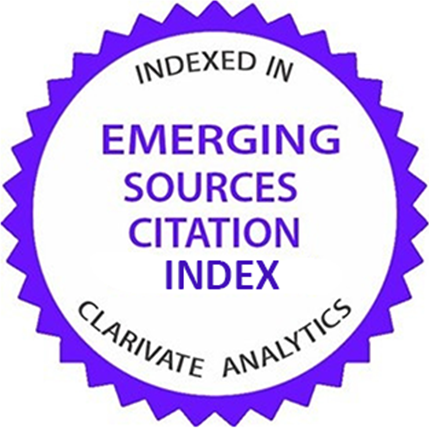Trend topics in emergency medicine: a comprehensive bibliometric analysis of CPR research
Abstract
Objective: This study aims to comprehensively evaluate the scientific contributions, research trends, and influential studies related to cardiopulmonary resuscitation (CPR), a critical life-saving intervention in cases of sudden cardiac arrest (SCA). By performing a bibliometric analysis of academic articles published between 1980 and 2023 in the Web of Science (WoS) database, the study seeks to identify key trends, thematic areas, and advancements in CPR research to provide valuable insights for guiding future studies and enhancing emergency medicine practices.
Methods: This study conducted a bibliometric analysis of academic articles on CPR published between 1980 and 2023 in the WoS database. A total of 4393 articles were examined to identify trends and contributions to the scientific literature. Various metrics were analyzed, including publication counts, citation rates, leading countries and institutions, prominent researchers, and the most cited studies. Performance analysis, keyword analysis, co-citation analysis, and thematic analyses were performed.
Results: The analysis revealed concentrated topics in CPR research and evolving trends over time. The findings showed significant contributions from leading countries, institutions, and researchers. The most cited studies highlighted key areas of focus and advancements in CPR practices. Thematic analysis indicated the major research themes and their development over the decades.
Conclusion: This bibliometric analysis provides an in-depth examination of the place and importance of CPR in emergency medicine. It offers a comprehensive perspective on the current state and future directions of CPR research. The findings help us better understand CPR's position in the scientific literature and its contributions to emergency medicine practices. These insights will guide future research directions and enhance scientific contributions to CPR practices in emergency medicine.
6. Bornmann L, Leydesdorff L. Scientometrics in a changing research landscape: bibliometrics has become an integral part of research quality evaluation and has been changing the practice of research. EMBO Rep. 2014;15(12):1228-32. 7. Pan HL, Wiens PD, Moyal A. A bibliometric analysis of the teacher leadership scholarship. Teaching and Teacher Education. 2023;1;121:103936.
8. Tengilimoğlu D, Orhan F, Şenel Tekin P, Younis M. Analysis of publications on health information management using the science mapping method: a holistic perspective. Healthcare. 2024;23;12(3):287. 9. Danış F, Kudu E. The evolution of cardiopulmonary resuscitation: global productivity and publication trends. Am J Emerg Med. 2022;54:151-64.10. Jia T, Luo C, Wang S, Wang Z, Lu X, Yang Q,et al. Emerging trends and hot topics in cardiopulmonary resuscitation research: a bibliometric analysis from 2010 to 2019. Med Sci Monit. 2020;9;26:e926815.
11. Montazeri A, Mohammadi S, M. Hesari P, Ghaemi M, Riazi H, Sheikhi-Mobarakeh Z. Preliminary guideline for reporting bibliometric reviews of the biomedical literature (BIBLIO): a minimum requirements. Syst Rev. 2023;15;12(1):239.
12. Chen Y, Zhang X, Chen S, Zhang Y, Wang Y, Lu Q, et al.. Bibliometric analysis of mental health during the COVID-19 pandemic. Asian J psychiatr. 2021;1;65:102846.
13. Aria M, Cuccurullo C. bibliometrix: an R-tool for comprehensive science mapping analysis. Journal of informetrics. 2017;1;11(4):959-75. 14. Hirsch JE. An index to quantify an individual's scientific research output. Proc Natl Acad Sci U S A. 2005;15;102(46):16569-72.
15. Kamdem JP, Duarte AE, Lima KR, Rocha JB, Hassan W, Barros LM, et al. Research trends in food chemistry: a bibliometric review of its 40 years anniversary (1976–2016). Food chem. 2019;1;294:448-57.
16. Egghe L. Theory and practise of the g-index. Scientometrics, 2006;69(1), 131-52. 17. Harzing AW. Reflections on the h-index. Business & Leadership. 2012;1(9):101-6.
18. Birinci HG. Turkish Journal of Chemistry’nin bibliyometrik analizi. Bilgi Dünyası. 2008;31;9(2):348-6919. Zheng X, Le Y, Chan AP, Hu Y, Li Y. Review of the application of social network analysis (SNA) in construction project management research. International journal of project management. 2016;1;34(7):1214-25. 20. Orimoloye IR, Ololade OO. Potential implications of gold-mining activities on some environmental components: a global assessment (1990 to 2018). Journal of king saud university-science. 2020;1;32(4):2432-821. Schöggl JP, Stumpf L, Baumgartner RJ. The narrative of sustainability and circular economy-a longitudinal review of two decades of research. Resources, Conservation and Recycling. 2020;1;163:105073. 22. Marshakova SI. System of document connections based on references. Nauchn-Techn.Inform. 1973;6:3-8.
23. Nasir A, Shaukat K, Hameed IA, Luo S, Alam TM, Iqbal F. A bibliometric analysis of corona pandemic in social sciences: a review of influential aspects and conceptual structure. Ieee Access. 2020;13;8:133377-402. 24. Cobo MJ, López-Herrera AG, Herrera-Viedma E, Herrera F. An approach for detecting, quantifying, and visualizing the evolution of a research field: a practical application to the fuzzy sets theory field. Journal of informetrics. 2011;1;5(1):146-66.
| Files | ||
| Issue | Vol 9 No 2 (2025): Spring (April) | |
| Section | Original article | |
| DOI | 10.18502/fem.v9i2.19196 | |
| Keywords | ||
| Bibliometric Analysis Cardiopulmonary Resuscitation Emergency Medicine Neurological Protection Research Trends | ||
| Rights and permissions | |

|
This work is licensed under a Creative Commons Attribution-NonCommercial 4.0 International License. |










